Introduction
This page showcases all of the bigger and smaller projects I conducted since the start of my Bachelor’s in Industrial Design in 2020. It contains both projects that I did for my education, as well as personal projects such as my own music. Each project contains a short description and a URL to an external site to learn more about the project. The projects are ordered from top to bottom in terms of relevance to the portfolio, and time and effort put into the project in question.
As elaborated earlier, this past mostly contains projects I did for the courses in my Bachelor’s. Design projects are pivotal in the Bachelor Industrial Design at the TU/e, since the knowledge and skills that are acquired during the courses are put into practice. This page will briefly discuss the project itself and my personal development.
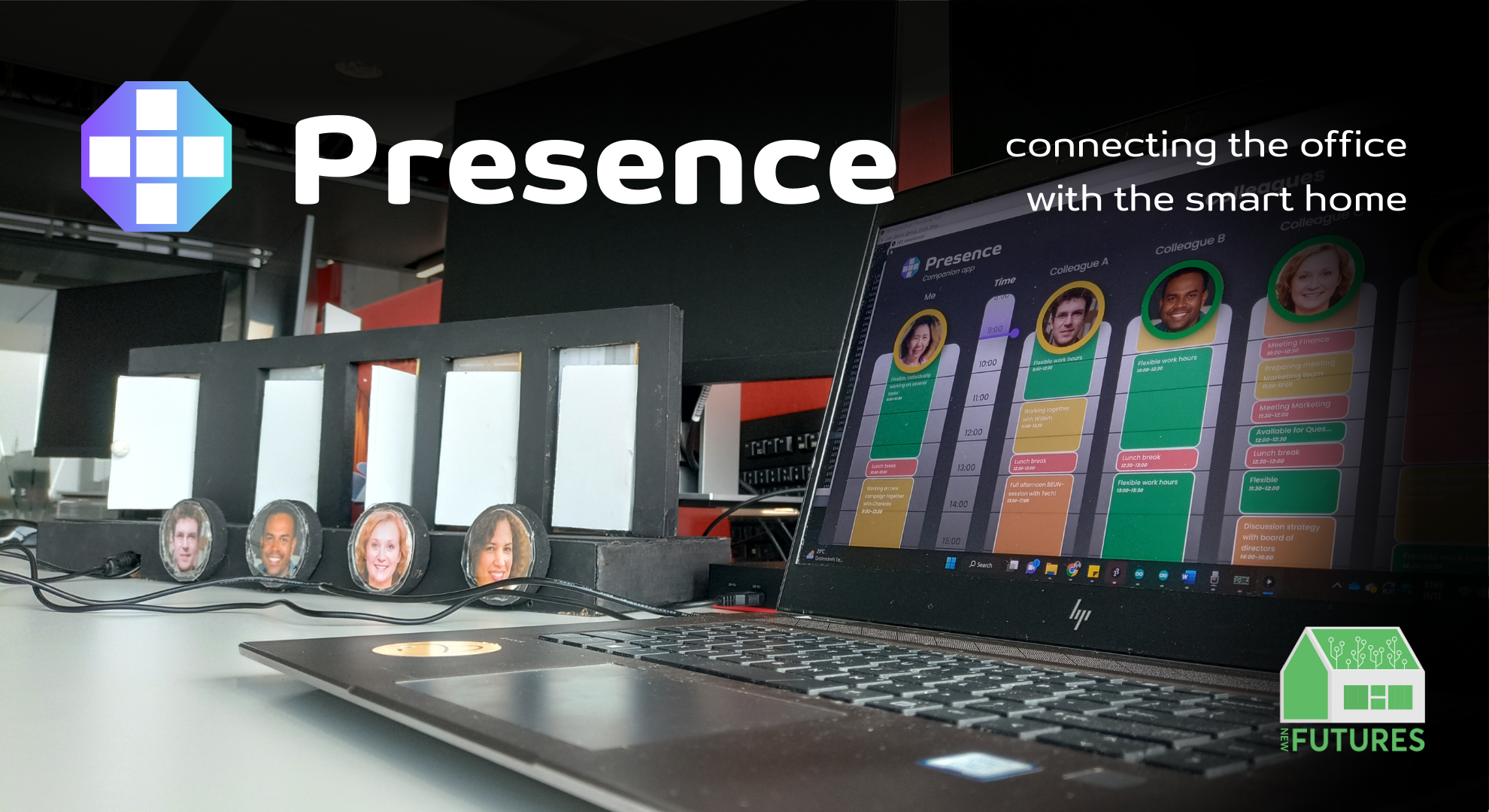
Final Bachelor Project (2023) – Presence
During my Final Bachelor Project I participated in the squad of New Futures, in the sub-theme of ’the future of work’. I designed and developed a system, including physical design and companion app, that would better connect remote workers with the office again. The intuitive interface and embodied way the availability of your colleagues is visualized would lower the threshold to approach your colleagues online.
Since this is the only semester-long project in the Bachelor of Industrial Design that one does on their own, I undertook a variety of different tasks in order to get to the end product that was presented on the demo day. I showed my capability in planning a design process, changing steps along the way as the concept evolves. Above all, in this project, many of the things I learned through my three-years Bachelor’s were applied, spanning across all expertise areas.
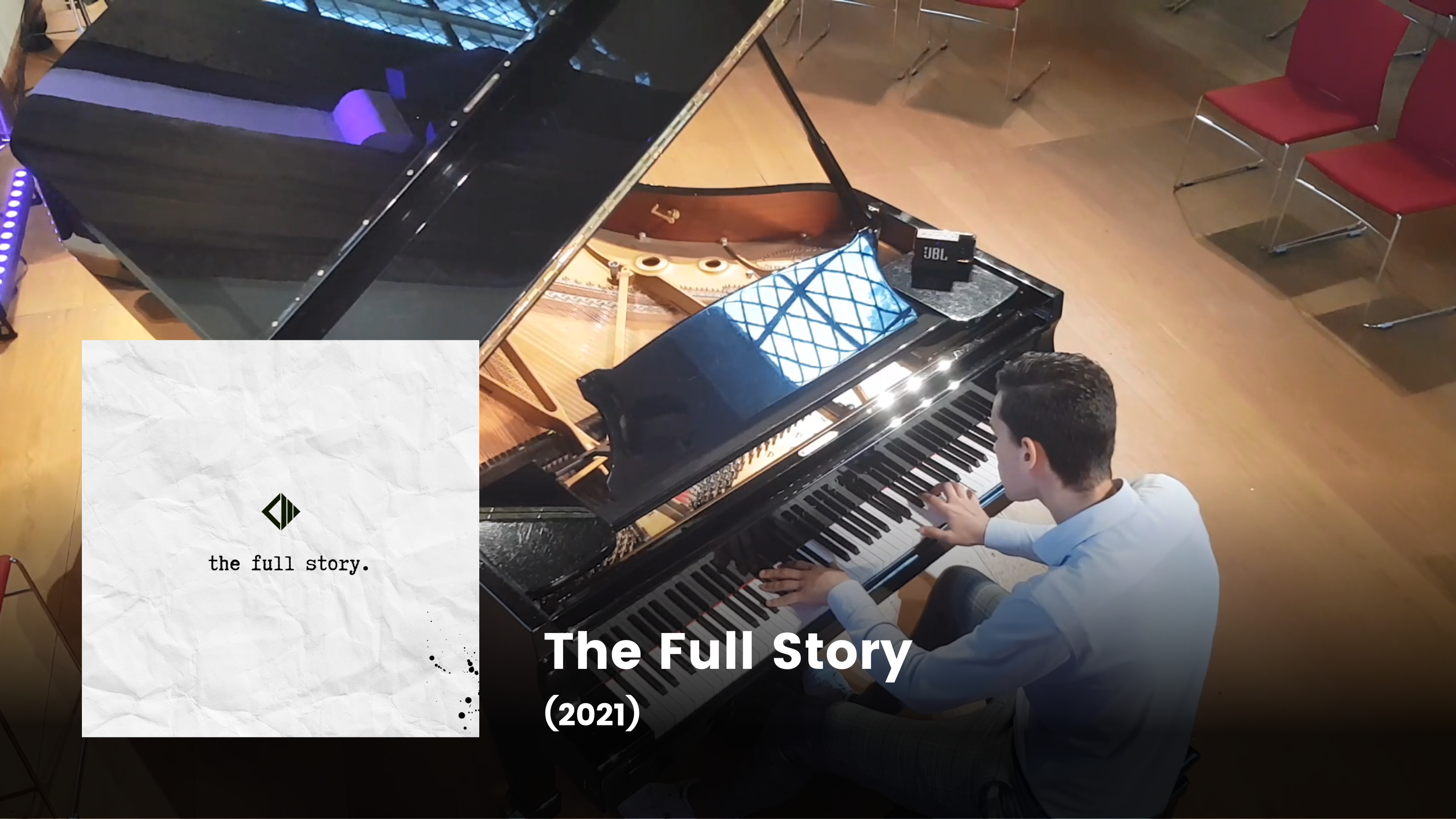
Coolwine Music – The Full Story (2021)
In 2021, I made my first album consisting of 10 self-written piano compositions. The video clip for this was recorded in the st. Aegtenchapel in Amersfoort. All 10 different songs form one big composition if you put them in sequence, like chapters in sequence form the full story together. This album is about my personal full story, told in the most universal language I know: music. Click on the button above to listen to the full album.

Entrepreneurship in Action (2022) – ENTRAIN
The last course in the USE-learning trajectory of “Technology and Entrepreneurship” was again an opportunity for our group to come up with a product and work it out as detailed as possible on an entrepreneurial aspect. Opposed to the Technology Entrepreneurship course I followed in Q2, we had all quartile to work out a product or service. We came up with the system of ENTRAIN, which would be implemented in the railway system of the Netherlands to allow for shorter boarding times and better passenger distribution across trains. Most notable about this project is that we had the opportunity to reach out to an expert in this area. We interviewed the product owner of the NS advanced data analytics team to get better insights into the considerations of our concept. To learn more about this project and the product itself, please view the video presentation.
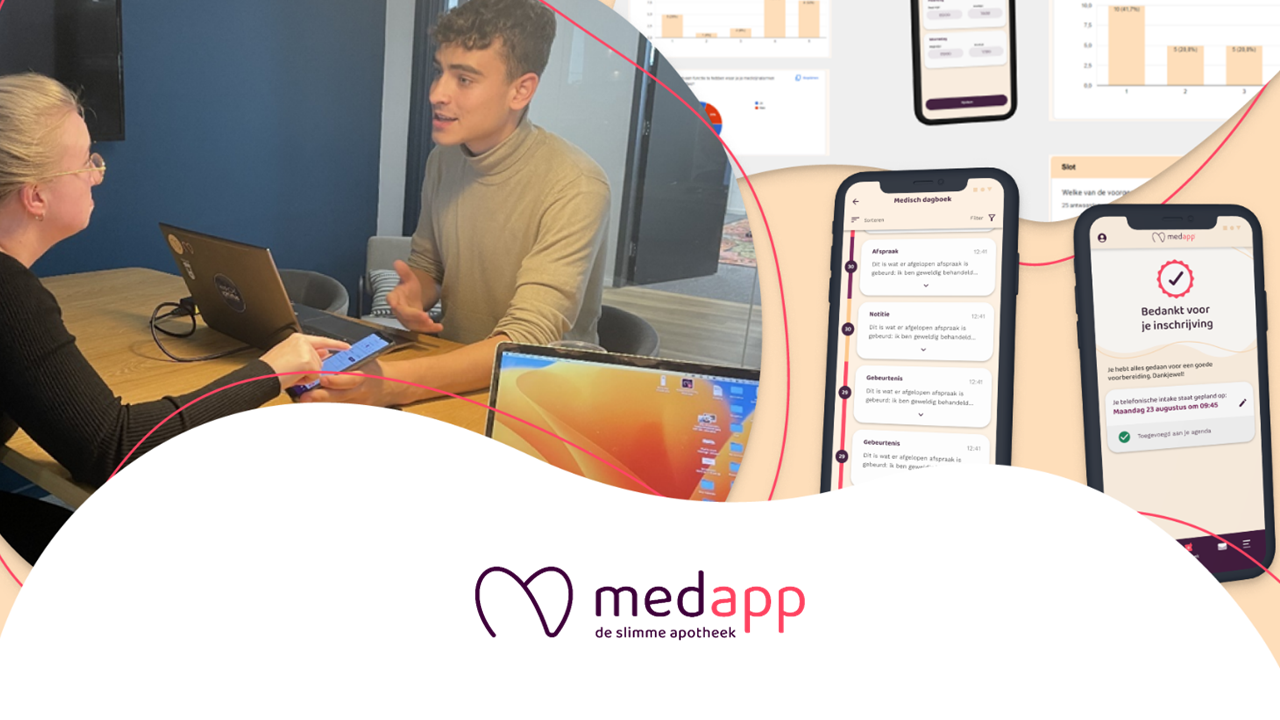
Internship National Company (2022) – at MedApp
In my third year, I did an internship at MedApp in Eindhoven. During my internship, I engaged in various UX/UI design activities, including research, feature design, and collaboration outside of the app team. While exploring different tasks, I improved my skills and adopted a more natural UX design mindset. Although I received positive feedback, I realized I could have taken more initiative in undertaking my own projects and exploring areas for improvement. Overall, I am satisfied with the experience and growth I gained as a designer within the company.

Coolwine Music – Cardboard Crafts (2022)
For the second consecutive year, I recorded a piano album with my own compositions in 2022. The album was called cardboard crafts. Crafting with cardboard is synonymous with creativity and experimentation. Being a bit more “out of the box” and trying new things out is what this album was all about. Click the button to listen to all the pieces.
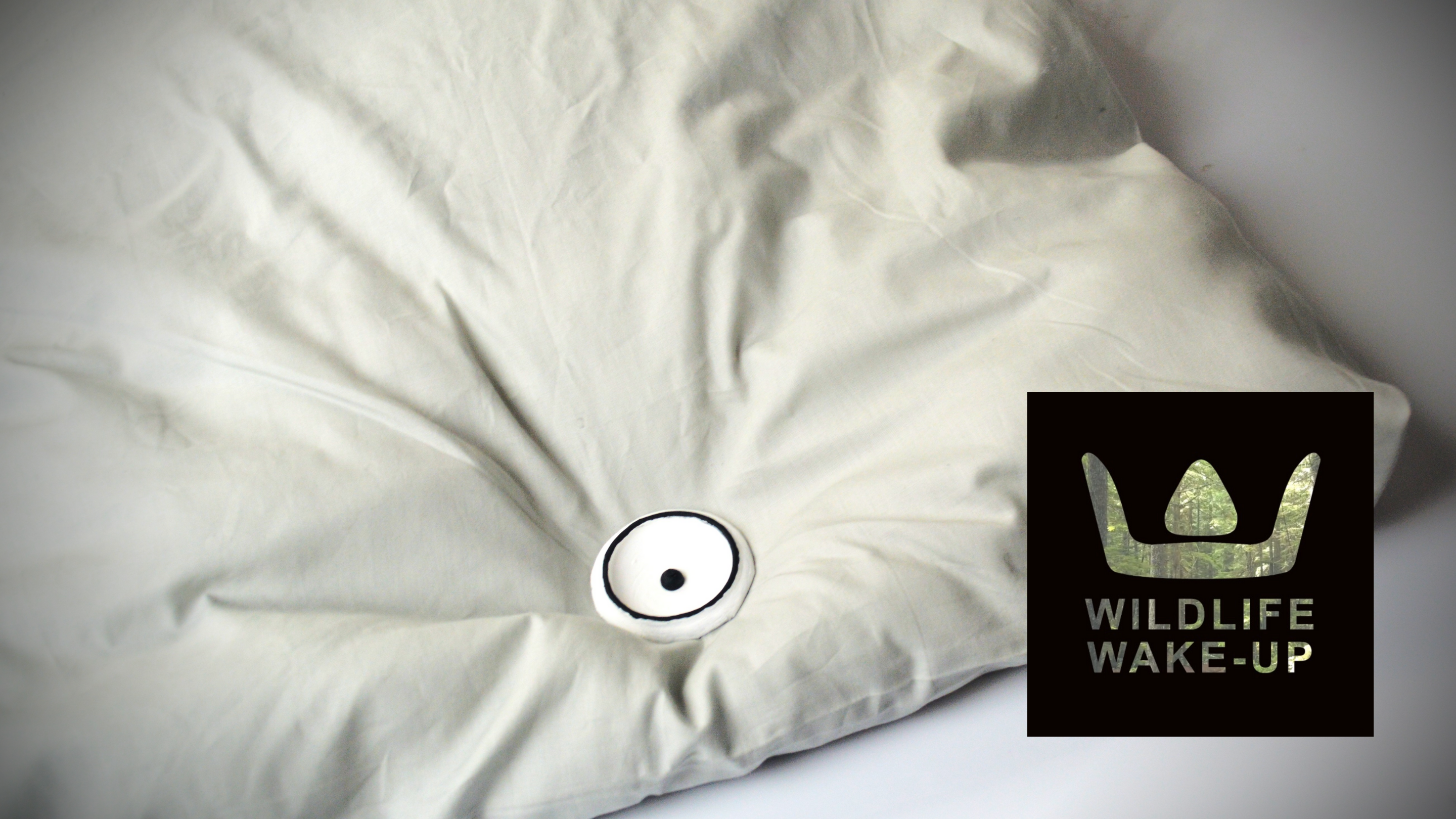
Aesthetics of Interaction (2023) – Wildlife Wake-up
Throughout this course, I developed a general understanding of interaction design and creativity techniques and applied them to different design assignments. During the final assignment, we focused on designing a wake-up experience for the extreme character of a wildlife photographer. Knowledge gained through previous assignments, papers, and lectures helped to achieve the final design. All of these learning points will be elaborated on, as well as my personal development during this course. Click on the button to watch the video.
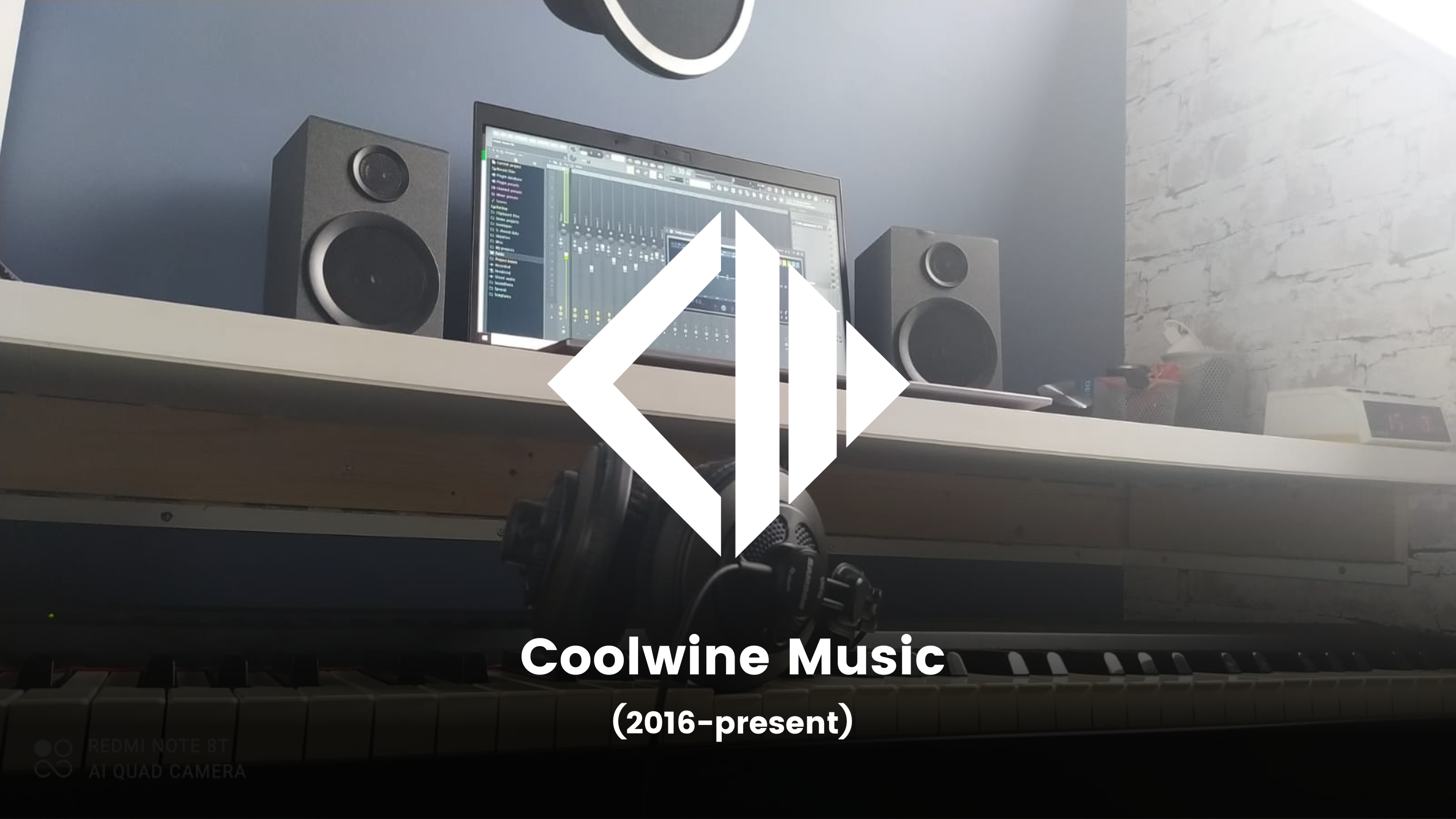
Coolwine Music (2016-present)
The creation of music goes back a long way. Back in 2011, shortly after discovering the piano, I composed my first song as a kid. In 2016, I got in touch with producing software and started experimenting in FL Studio. I produced and published my first two songs all the way back in 2016. That is where the story of Coolwine music started. The brand was conceived, and more songs (especially remixes) were produced and published in between 2017 and 2021. Throughout the years, the Coolwine brand was expanded with the variety of different projects that I undertook in the Bachelor of Industrial Design. However, the origin lies in the creation of music. Click on the buttons on the top to view/listen to my full body of work.

Project B2.1 (2021) – DiVine Garden
During the first semester of my second year, I worked on my second design project. The project was done in the squad of New Futures, which focusses on designing IoT-interconnected devices within the house of the future. The focus lies on creating the perfect living environment for the fictional people living in a model house. The project that we developed focussed on battling automation within the lives of people in the future. DiVine Garden makes you grow your own vegetables through home hydroponics. In the end, it is not about having vegetables in the end, but the process of having to take care of your plants every day. By having a daily habit that is not automated, people feel like they are in control. Being able to control the small tasks in your life enables you to tackle the bigger challenges. Prototyping physically and doing user tests helped us to form a clear design goal to conclusively deliver a final design to be proud of. Take a look at the project by clicking on the button.
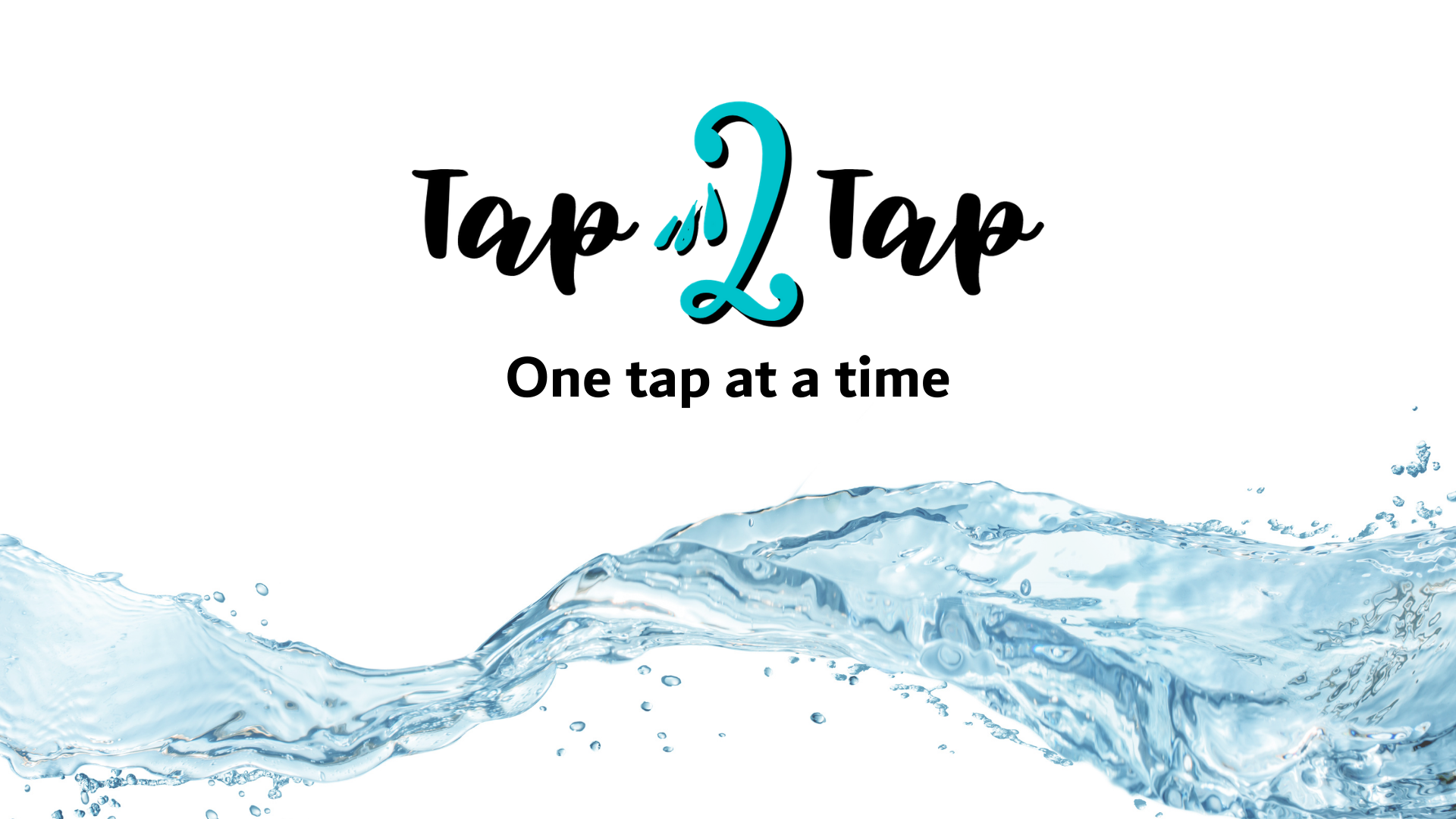
Project B1 (2021) – Tap2Tap
During my first semester-long design project I participated in the squad Smart Cities and in the team of Climate Adaptation. We developed an ecosystem of devices that could be installed in each citizen’s home, working together through IoT, to keep you aware of your water usage. Our whole group had the same goal throughout the whole project: do as much as possible to develop a deeply thought-out, high-quality end product. To achieve this we had to apply a variety of different ideation and validation methods. The project made me develop myself professionally as a designer, as I got to know different scientific methods and processes to generate and validate ideas. If you are interested in the things we developed during the project, make sure to take a look. The second button on the right redirects to the interactive app prototype I was predominantly working on.
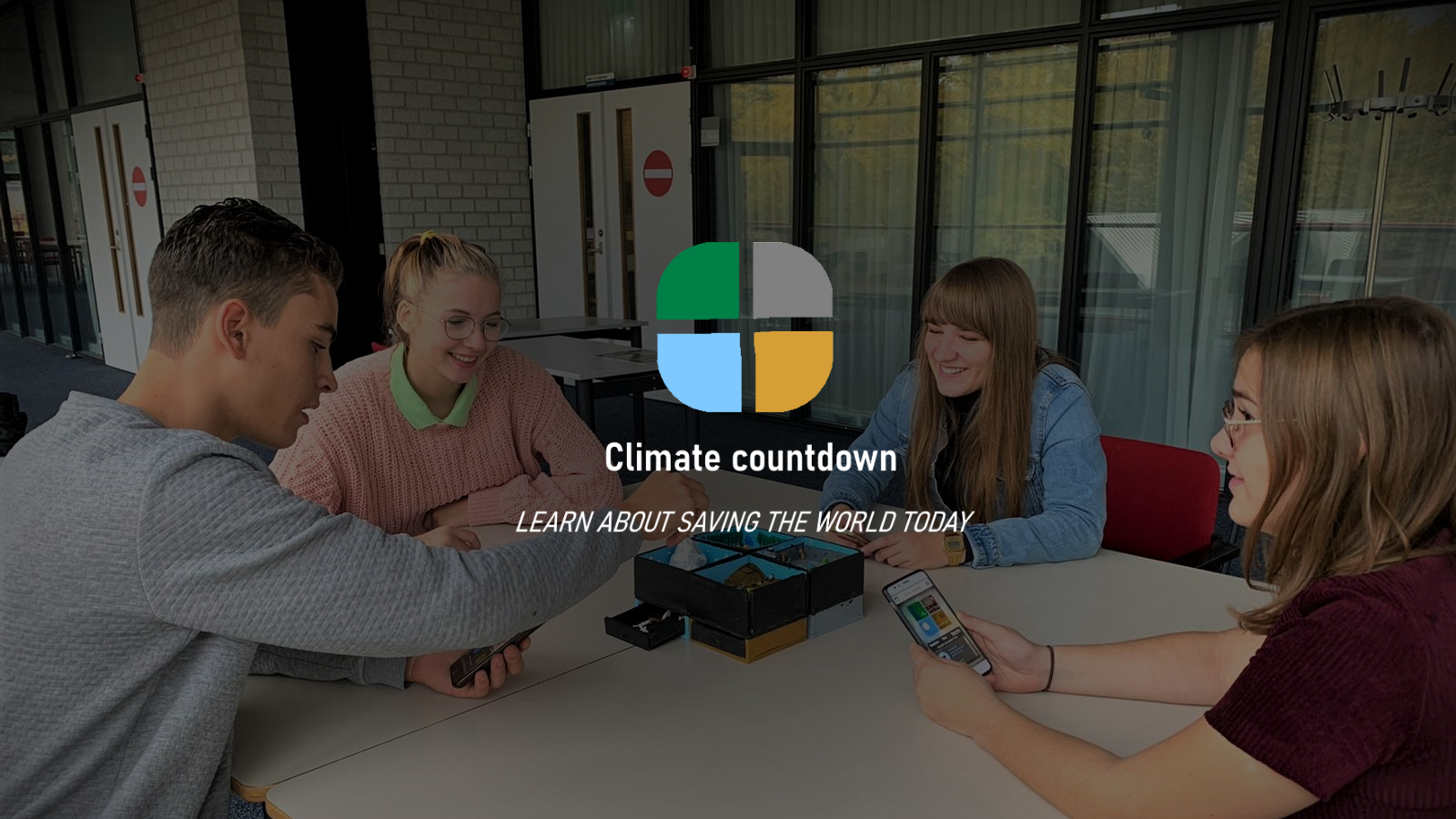
From Idea to Design (2020) – Climate Countdown
In Q1 of the first year, I followed the course “From Idea to Design”. This course was all about being creative and getting familiar with ideating and evaluating your ideas for the first time. We had to design a physical-digital hybrid board game that is meant to be educational. There was still a lot of creative freedom to go in whatever direction we wanted. The design we came up with is a board game, including a companion app that teaches high school kids about the consequences of climate change and how they can act upon it in their daily life. A lot of time and effort was put into making “the outside design” look as professional as possible. During this project, I spend countless hours designing the app, brand, and all graphical design Please check out how it looks on the dedicated website!

Intelligent Interactive Products (2023) – Pollock
During the course of Intelligent Interactive Products, which revolves around learning the fundamentals of machine learning and applying them to design projects, I made ‘Pollock’ as my final deliverable. This intelligent interactive product makes use of a (multiclass-) linear support vector classification algorithm, trained with fused sensor data gathered by microphone and accelerometer, to identify what note you are playing on glass bottles. Based upon your input the machine learning algorithm can create your music into an artwork. Click the button to watch the video.

Introduction to Tech Entrepreneurship (2021) – RISE Alarm Clock
For the course of Tech Entrepreneurship, we were completely free to choose whichever direction we wanted to go. The essence of the assignment was to design specifically for a segmented target group, doing interviews, conducting questionnaires, and making value propositions and business models around a specific design opportunity. In the final presentation, all this information was used to make a well-substantiated story about why our product would succeed if it were to be actually put on the market. During this assignment, I was responsible for doing this presentation, as I was the one that originally conceived the idea and did all design-related activities. The working of the product, which is an alarm clock that helps you get up with morning exercises, is explained in the picture.
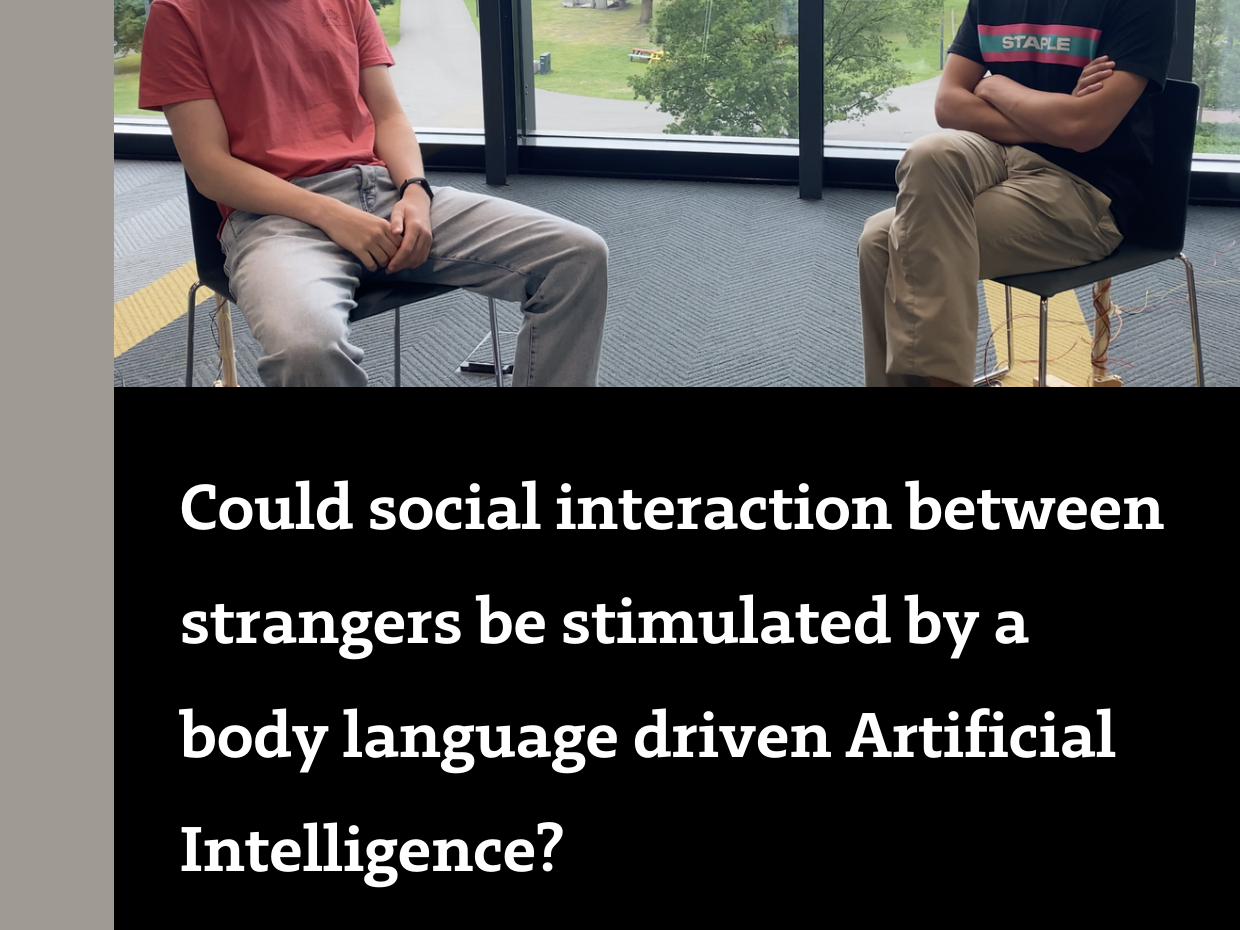
Project B2.2 (2022) – Explorative (design) research into AI stimulating social interaction between strangers
My third semester-long project in the curriculum of Industrial Design at the TU/e was a design research project. I worked together with Tobias Visch and Veerle van den Abeele in an exporatorive research to body posture in social contexts, its relation to social interaction and an AI-driven research artifact functioning as a means to break the ice between strangers.
In our research, a fan-shaped actuator represented the openness of the body posture of participants. We wanted to find out whether AI visualizing the openness of the body posture of participants in a fan-shaped design had any influence on the social behavior of the participants. Within our research, we found that the degree of social interaction is influenced a lot by the setting of the research. On top of that, we found that posture can say something about openness for social interaction, but is a very personal thing. Therefore it does not say everything about the openness of participants in a social context. View the demo-day website to find out more about this project!

Creative Mechanical Design, Engineering and Manufacturing [Advanced] (2023) – Shape Changing Laughing Mirror
For the course of Creative Mechanical Design, an elective within the Bachelor of ID, I did a project in which I made a laughing mirror that could change its shape randomly each time a person stands in front of it. The main challenge of this assignment was to apply design, engineering and manufacturing methods we learned throughout the course. First off all, we had to come up with a design to transform rotational motion (from a servo) in a translational motion. When designing we had to consider exact constraint, and all kinds of forces that might act on the system. Furthermore, we first had to consider material choice and do finite element analyses with the designed parts using SolidWorks. On top of that, we used different manufacturing methods, such as lasercutting and 3D-printing. Lastly, I wrote a code for the servos to randomly move and a distance sensor, to detect if there’s a person in front of the mirror. Summarized, this course offered a broad toolbox of design and manufacturing methods to consider mechanics in design. Click the button above to watch d
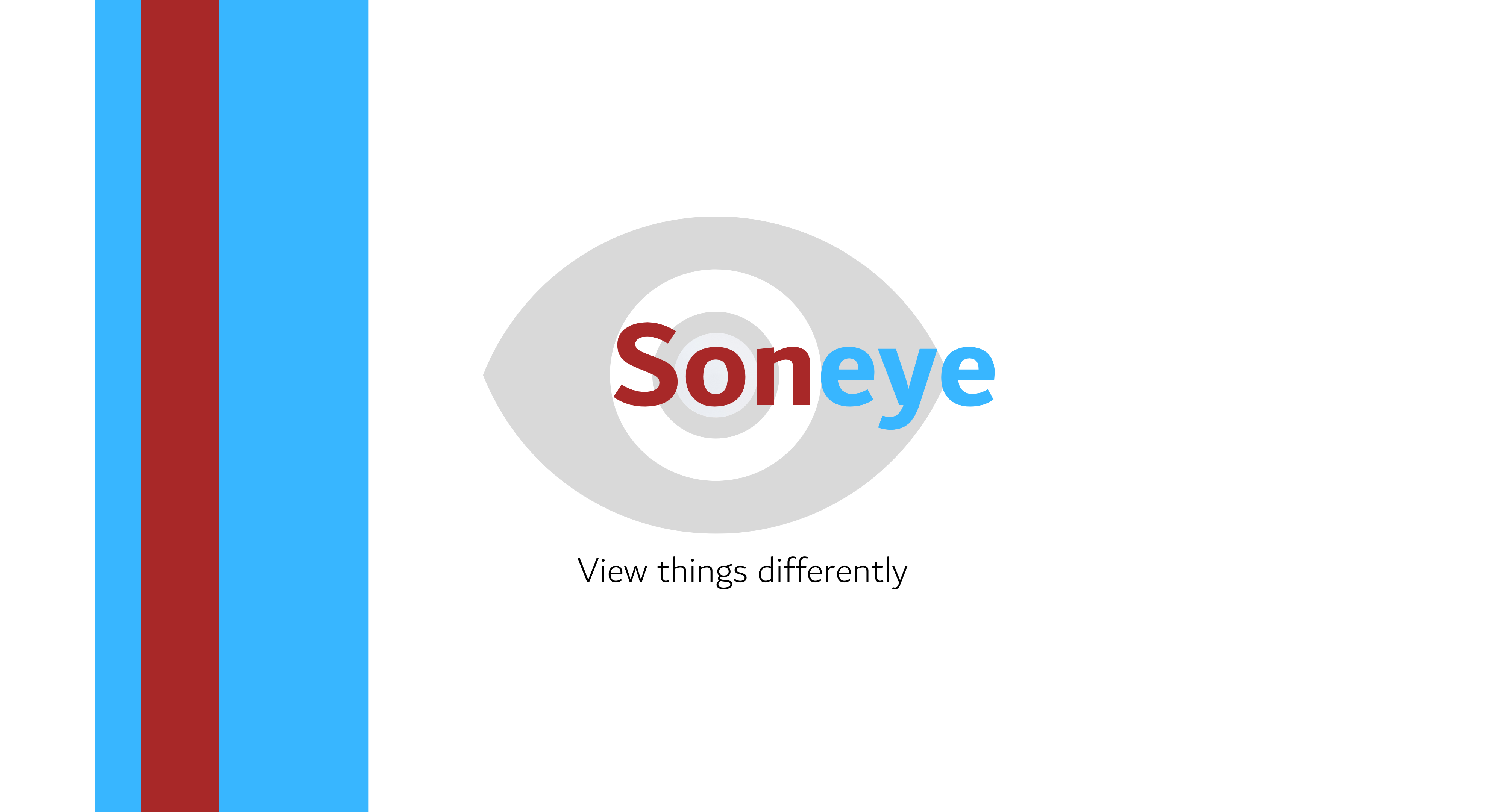
Engineering Design (2021) – SonEye
In quartile one of my second Bachelor’s year at the TU/e, I followed the course of Engineering Design. Which is dedicated to teaching students of all majors about an iterative technological design process. From my first year of Industrial Design, I already had a foundation of knowledge and skills that are handy for design projects. Within this project, I took responsibility to guide the group in the right direction, outlining the necessary steps to come to an end-product. The device that was built was to make blind or visually impaired people navigate their environment more easily. We developed a headband, equipped with ultrasonic proximity sensors at all sides, paired with vibrating elements to give the user haptic feedback about their surroundings. To learn more about this project, please view the product demo.
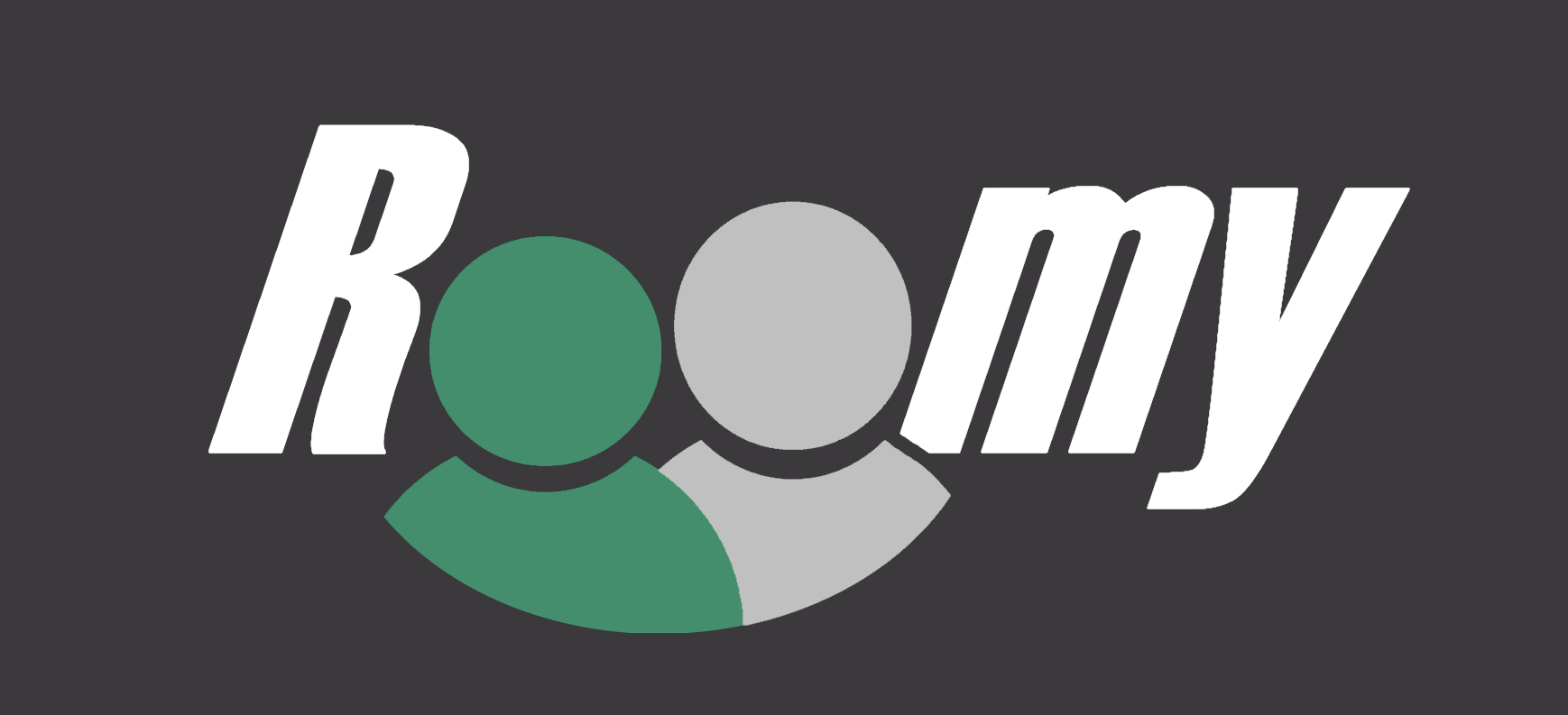
User-Centered Design (2020) – Roomy
The course of User-Centered Design in Quartile 2 of the first year focussed on teaching you methods to incorporate the user’s opinion and experience into a design. As described in one sentence, the course was about doing user research both qualitatively and quantitatively, molding the user research results into ideas and subsequently tangible designs. In the end, we had to develop an app that would be a platform for “millennials” to find either a room or a roommate.
The steps in this process included researching to different user interfaces, doing user research, subsequently affinity diagramming the results, and making personas and conceptual models. Thereafter, we engaged in making paper prototypes and in the end, developing an interactive app prototype. To summarize, I learned a lot of methods to design with a focus on user experience. The thing that I enjoyed most throughout the course was actually designing and developing an interactive app prototype. If you are interested in what I made, please click on the video link.
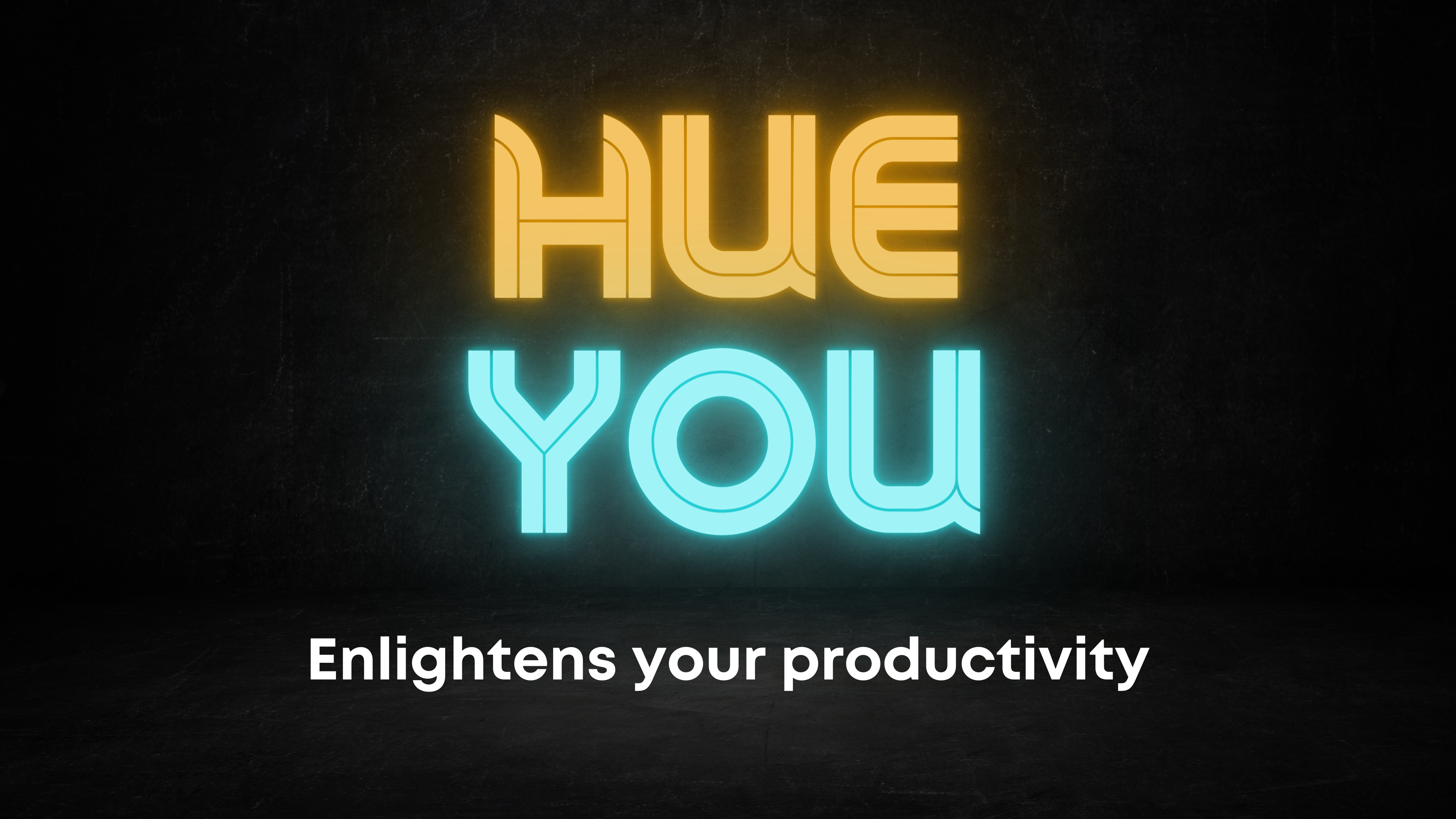
Creative Electronics (2022) – HueYou (& heating system)
Prior to the first year’s course in Creative Electronics, I did not have much experience with prototyping interactively using electronics. Through a whole bunch of weekly assignments, practicing with a new component each week (e.g. resistors, transistors, capacitors, operational amplifiers), I got better at building circuits on a breadboard. For a slightly bigger assignment, I had to build a heating system, equipped with a NTC Thermistor, Potentiometer to set the temperature a heating element, and an analog control unit. All practical assignments were reported elaborately. View the explanation video to learn more.
For the last, relatively small assignment of the course, we were given the freedom to build an electronic product of our own. Using the knowledge that I had acquired earlier from the assignments, I designed an analog circuit that controls the hue of a desk light. “HueYou” automatically gives you a colder hue of light during the day, so that you can be productive, and a warmer hue of light in the evening, so that you can relax. To view a technical walkthrough of the circuiting, click the second button of the two.
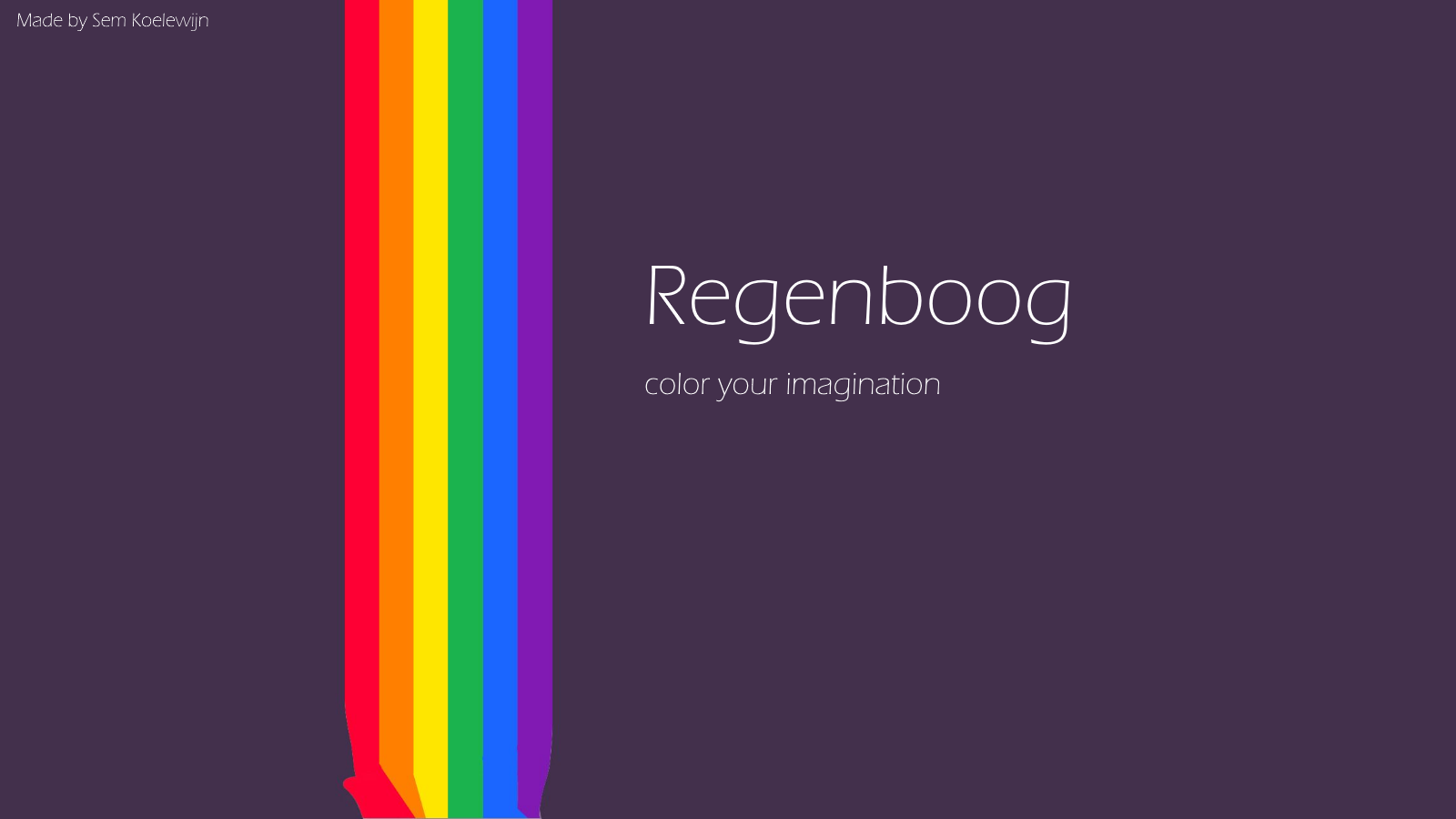
Creative Programming (2020) – Regenboog
In quartile 1, the course of Creative Programming learned us the basics of programming in Processing (which is a language similar to Java) in a creative way. For the first challenge, we had to make a drawing. I wrote a code that randomly produces “paintings” in the style of Piet Mondriaan. For the second challenge we had to take it a step further by writing a program in which you could interact with mouse inputs. We also got the opportunity to include other inputs from your pc and even from Arduino sensors connected to your pc. I came up with “Regenboog”, a program in which you can draw whatever you like using your mouse. I called it Regenboog because of the big rainbow color picker that I put in. Throughout this course, I learned the basic stuff of how to program in Java, and how to design a GUI from the perspective of a programmer. If you are curious about how it looks, please click the button to watch a walkthrough video.
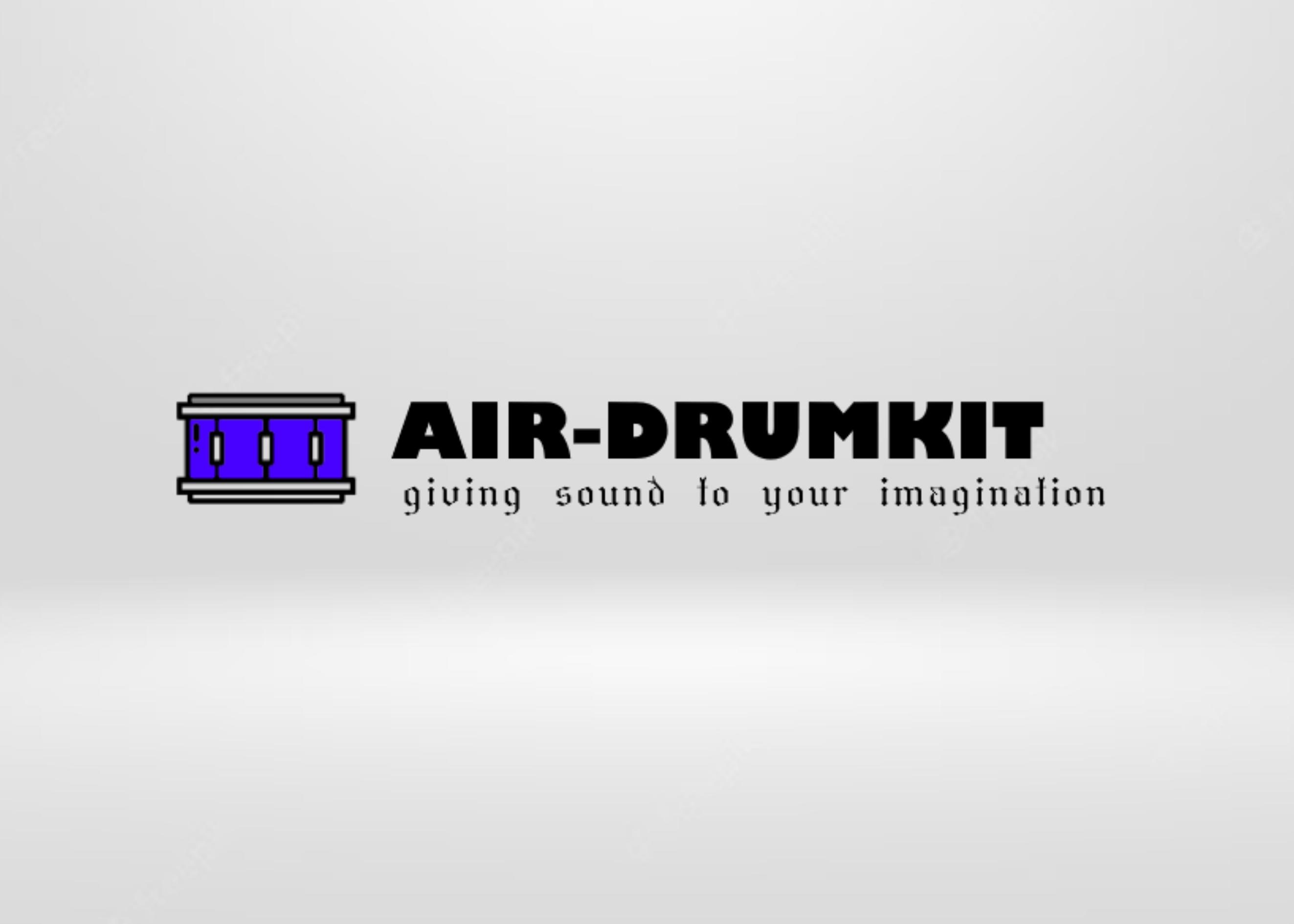
Intelligent Interactive Products (2023) – Air Drumkit
As a midterm deliverable for the course ‘Intelligent Interactive Product’, I designed drumming sticks that you can drum with in open air, without the need of a drum kit. The ‘AIR-DRUMKIT’ makes use of a multiclass classification machine learning algorithm in order to determine which drum you are hitting. Subsequently, audiovisual feedback is given to the user. Click the button to watch the video on YouTube.
